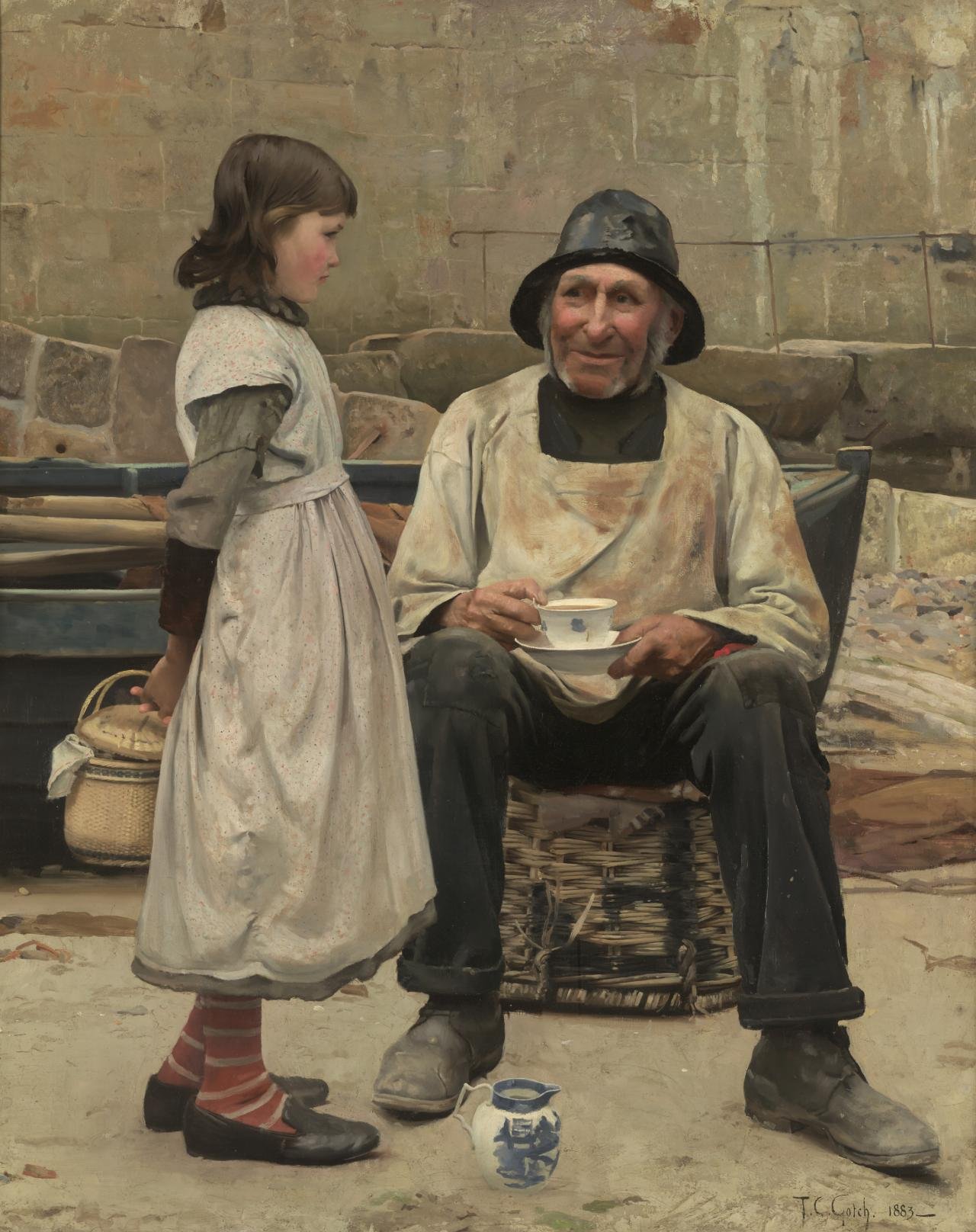William John wainwright (1855-1931)
Mental Arithmetic, c1883 🔴
Watercolour on Paper, 50 x 40cm
Signed “W.J. Wainwright”
Wainwright’s decision to leave Newlyn in 1885, coincided with his loss of sight in one eye, something typically attributed to the dazzling Cornish sunlight, which contended with less pollution than in the Birmingham of his birth or the Antwerp and Paris of his student days.
It is also possible that his declining vision had something to do with a work ethic, which took him to prodigious technical heights, but brought about a slow artistic deterioration as the years went on.
The painting shares a title with Thomas Cooper Gotch’s (1854-1931) painting of 1883, now in the National Gallery of Victoria. Wainwright was a close friend of Gotch, painting him and his wife, Caroline, when the 3 of them lived in Paris in 1882. They arrived in Newlyn later in the same year, following the birth of their daughter. It is possible the recommendation came from Wainwright.
Though the painting is considered one of the more significant from Gotch’s time in Newlyn, it is hard to tell if the idea originated with him or if it came from Wainwright. The red staining to the fisherman’s smock is a peculiar detail, repeated by both artists. It is also interesting that the heavy-set figure clutching his coins with a Cornish zeal, is the same fisherman that appears in the early works of Walter Langley (1852-1922).
Langley, also from Birmingham, and whose similarly precise watercolours have eclipsed Wainwright’s (at least in price), is generally seen as the pioneering figure, whose brief visit to Newlyn in late 1880, paved the way for later artists. Wainwright was the first to follow him, arriving in early 1881 and remaining for a few weeks. During his second visit of 1884 he remained much of the year and lodged with 8 other artists, exchanging ideas, painting together, laying the intellectual foundations for an artistic movement that would persist well into the next century.
Mental Arithmetic, 1883 - Thomas Cooper Gotch
Oil on Canvas, 153.5 x 123cm (National Gallery of Victoria)
Mending the Sails - Walter Langley (1852-1922)
Black and White Chalk on Paper 71 x 48.3cm (Unknown Private Collection)


